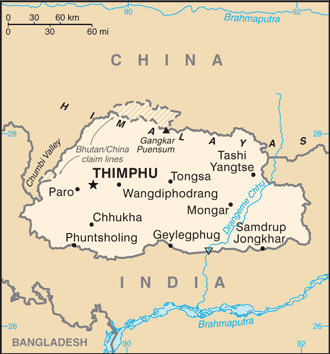Investing in Bhutan


The economy, one of the world's smallest and least developed, is based on agriculture and forestry, which provide the main livelihood for more than 60% of the population. Agriculture consists largely of subsistence farming and animal husbandry. Rugged mountains dominate the terrain and make the building of roads and other infrastructure difficult and expensive. The economy is closely aligned with India's through strong trade and monetary links and dependence on India's financial assistance. The industrial sector is technologically backward, with most production of the cottage industry type. Most development projects, such as road construction, rely on Indian migrant labor. Model education, social, and environment programs are underway with support from multilateral development organizations. Each economic program takes into account the government's desire to protect the country's environment and cultural traditions. For example, the government, in its cautious expansion of the tourist sector, encourages visits by upscale, environmentally conscientious tourists. Complicated controls and uncertain policies in areas such as industrial licensing, trade, labor, and finance continue to hamper foreign investment. Hydropower exports to India have boosted Bhutan's overall growth. New hydropower projects will be the driving force behind Bhutan's ability to create employment and sustain growth in the coming years.
The Bhutan currency is the ngultrum, which is pegged to the Indian Rupee. One ngultrum can be divided into 100 chetrum.
Bank of Bhutan - http://www.bobltd.com.bt/
Bhutan Power Corporation - http://www.bpc.bt/
Ministry of Finance - Royal Government of Bhutan - http://www.mof.gov.bt/
Royal Monetary Authority of Bhutan - http://www.rma.org.bt/
Ministry of Trade and Industry - http://www.mti.gov.bt/
Hydropower: Bhutan is a major exporter of hydroelectric power. See this article about hydro-electric power projects on http://www.bhutannewsonline.com/
Countries that border Bhutan: India | China
Learn more:
Back to Country Investing



